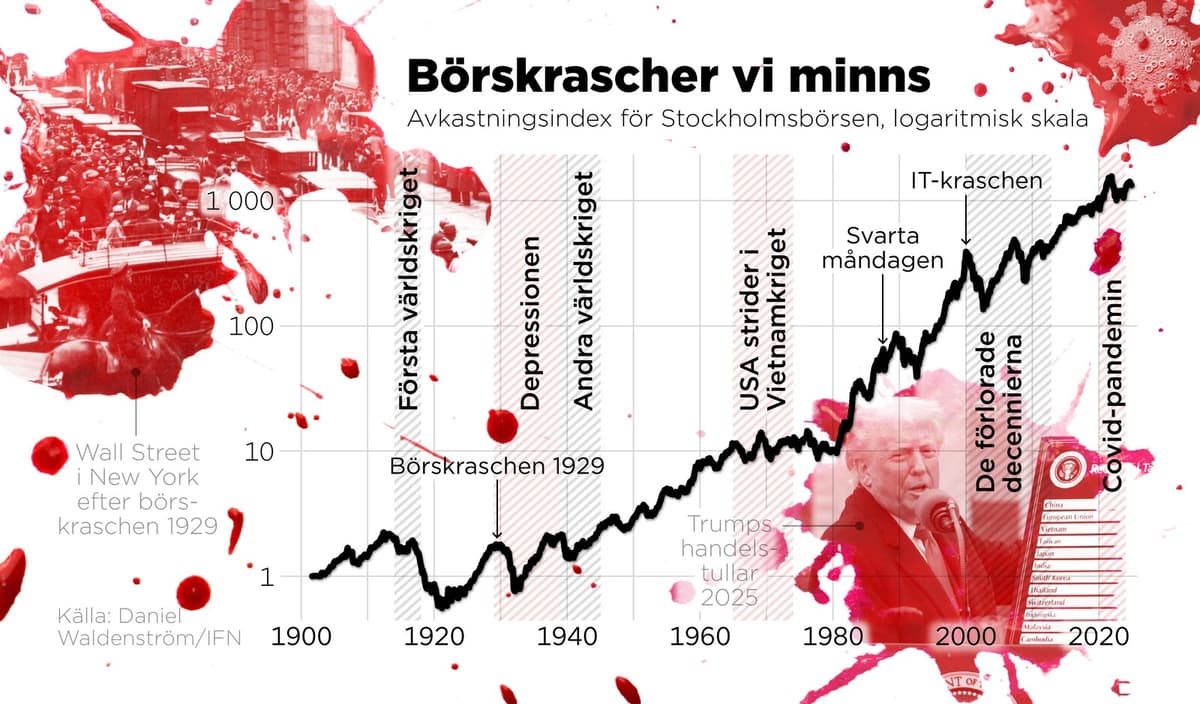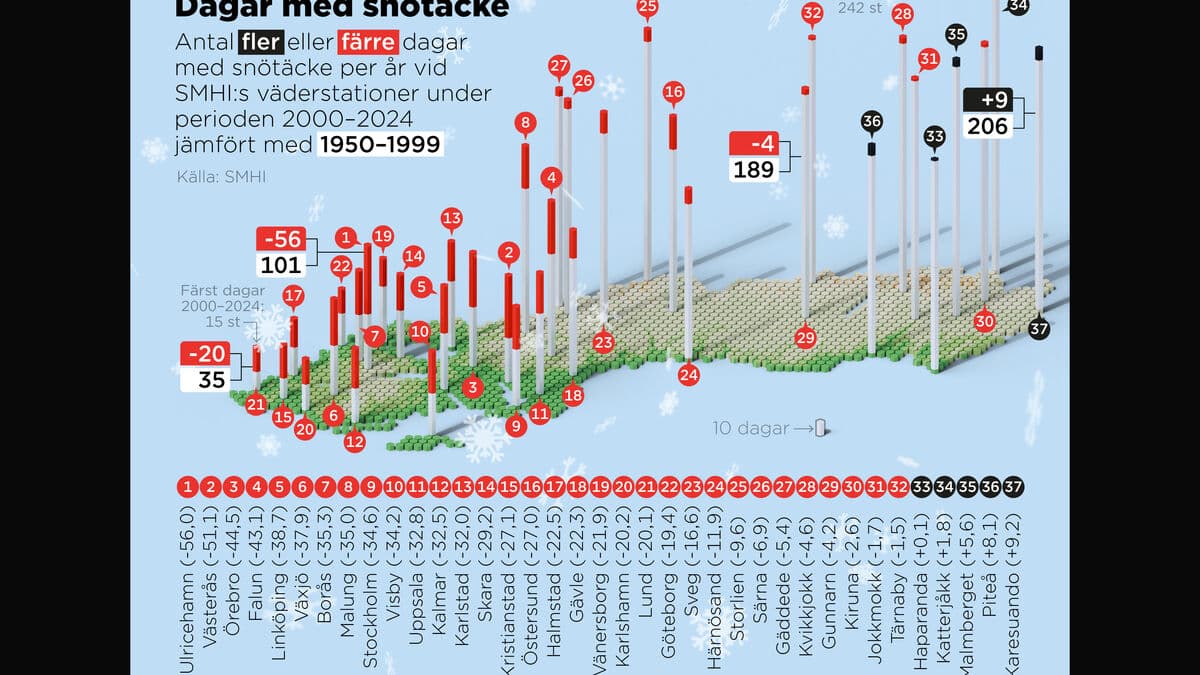In just one month, the Stockholm Stock Exchange has lost almost a fifth of its value, and the turbulence is still significant in the wake of the development in the trade war.
What is a stock market crash?
There is no clear definition. But it should be a large, dramatic decline, around 20 percent, according to several experts. Daniel Waldenström, professor of economics at the Institute for Business Research, sees a stock market crash as a decline of 4-5 percent in one day.
This is among the bloodiest we've seen in a long time, you can say, he says about Monday's big fall – where the Stockholm Stock Exchange was down almost 8 percent before recovering somewhat.
What causes a stock market crash?
At the core, it's about people who invest on the stock exchange believing that the price tomorrow will be lower than today and falling prices ahead. When everyone does it simultaneously in this way, which is extremely unusual – we see these enormous downturns, says Rikard Westerberg, who teaches economic history at the Stockholm School of Economics.
Can you stop trading on the entire stock exchange?
The entire stock exchange can actually be stopped – or closed – in extreme events. On the New York Stock Exchange, so-called "circuit breakers" are activated if the broad index falls at least 7 percent, then the stock exchange is stopped for a quarter.
What are the historical parallels to the current fall?
Trump's tariff decision has led to reactions similar to the beginning of the financial crisis in 2008 and the pandemic in 2020. During Black Monday in 1987, the world's stock exchanges plummeted due to fear of a war between Iran and the USA, and fell by more than 20 percent in some places.
In the financial crisis of 1990 with Nyckeln and Gamlestaden, the stock exchange fell 25 percent. And the Kreuger crash, when the stock exchange fell over 30 percent in March 1932. So what we've seen today (Monday) is still not on the same historical level, says Waldenström.
Are there any differences?
One difference compared to many other crises is that it has not been triggered by inflated values – i.e., a bubble bursting.
This is more than ever a politically triggered crisis. It's not a giant bubble that has burst in the same way as in 2008, says Lars Magnusson, professor of economic history at Uppsala University.
How long does it take for the stock exchanges to recover?
It depends on whether the downturn leads to a broader economic downturn or if it's a temporary dip, according to Magnusson.
If you look at the classic of all stock market crashes, Wall Street in 1929, which was followed by the long depression of the 1930s, the stock prices didn't return to the same level until the 1950s, he says.
In other crises, it has rather taken about a year for the prices.
But I also think that good economic news could quickly turn this around, says Westerberg.
Can it lead to a new depression?
If the high tariffs are here to stay, it could lead to a depression – a prolonged recession of at least two years. The spiral can begin with people choosing to postpone purchases. This in turn makes companies that sell goods and services get worse results and less to do, and they lay off staff. Then unemployment rises.
These tariffs that Trump is now imposing are in practice a tax on goods. And that means things become more expensive. And when things become more expensive, we get inflation, then it becomes harder to buy things for the money you have, says Westerberg.
Unemployment and inflation can lead to social unrest.
In the long run, it can also have very serious political effects. That people lose faith in the political system and choose other types of leaders. So it can have all sorts of unpleasant consequences, says Westerberg.
Financial crisis: 2007–2010. A crisis that originated in the American housing and interest rate market. 2007–2008, the OMX30 more than halved in the wake of the crisis.
Pandemic: Fear of the spread of covid at the beginning of 2020 wiped out a third of the Stockholm Stock Exchange's value in a month.
IT bubble: In the wake of the IT bubble, the largest companies on the Stockholm Stock Exchange lost an average of 24.5 percent per year from 2000 to 2002.
Black Monday: Fear of a war between the USA and Iran spread panic on the world's stock exchanges in 1987. The New York Stock Exchange fell by more than 22 percent in one day.
Stock market crash and depression: Wall Street's crash began in 1929, and in three years, 89 percent of the stock market value had disappeared. In 1933, the unemployment rate in the USA was 25 percent. In 1932, the news of Ivar Kreuger's death made the Stockholm Stock Exchange fall by over 30 percent.
Sources: The Swedish Central Bank, Avanza, Nordea.





